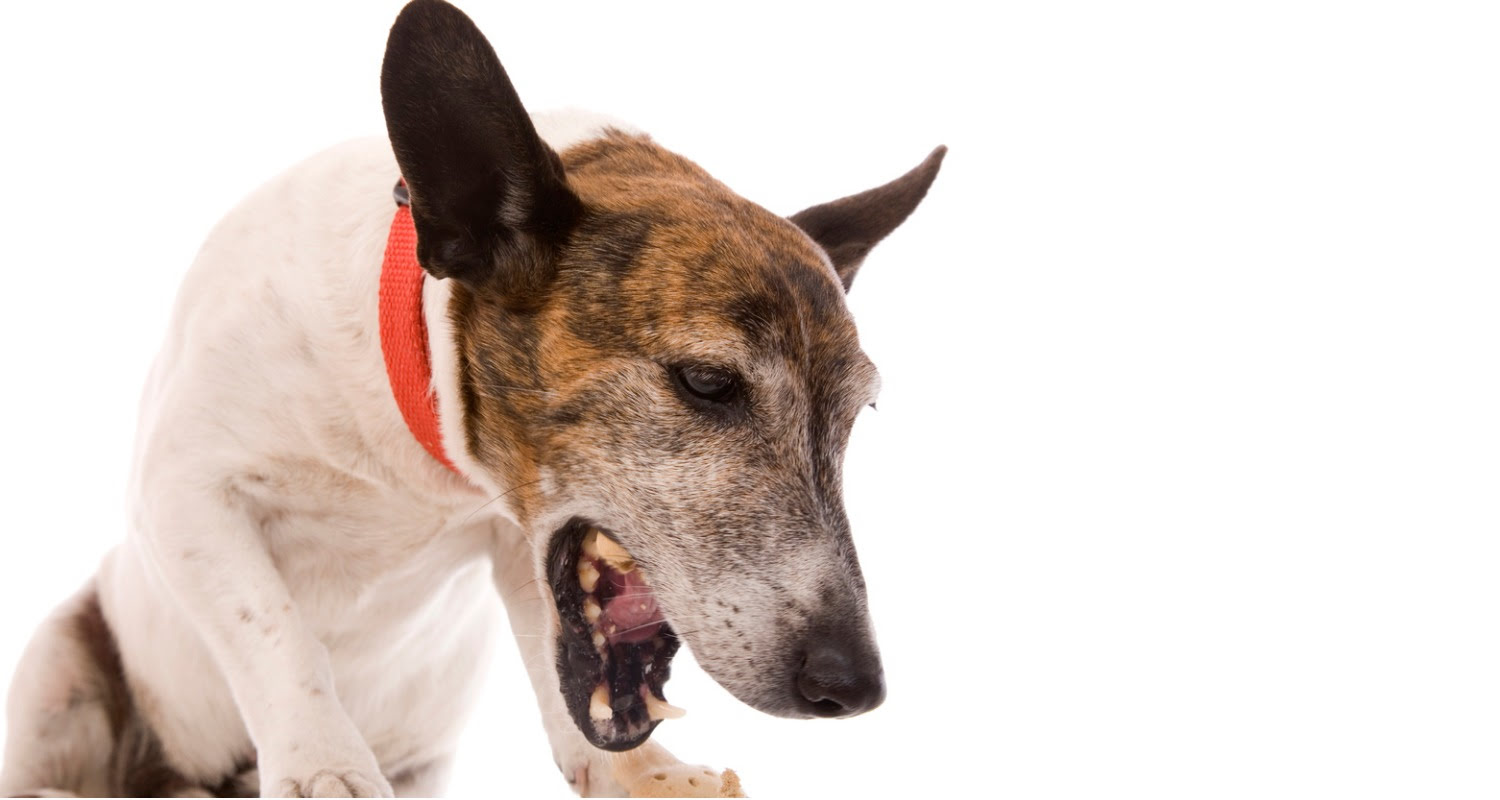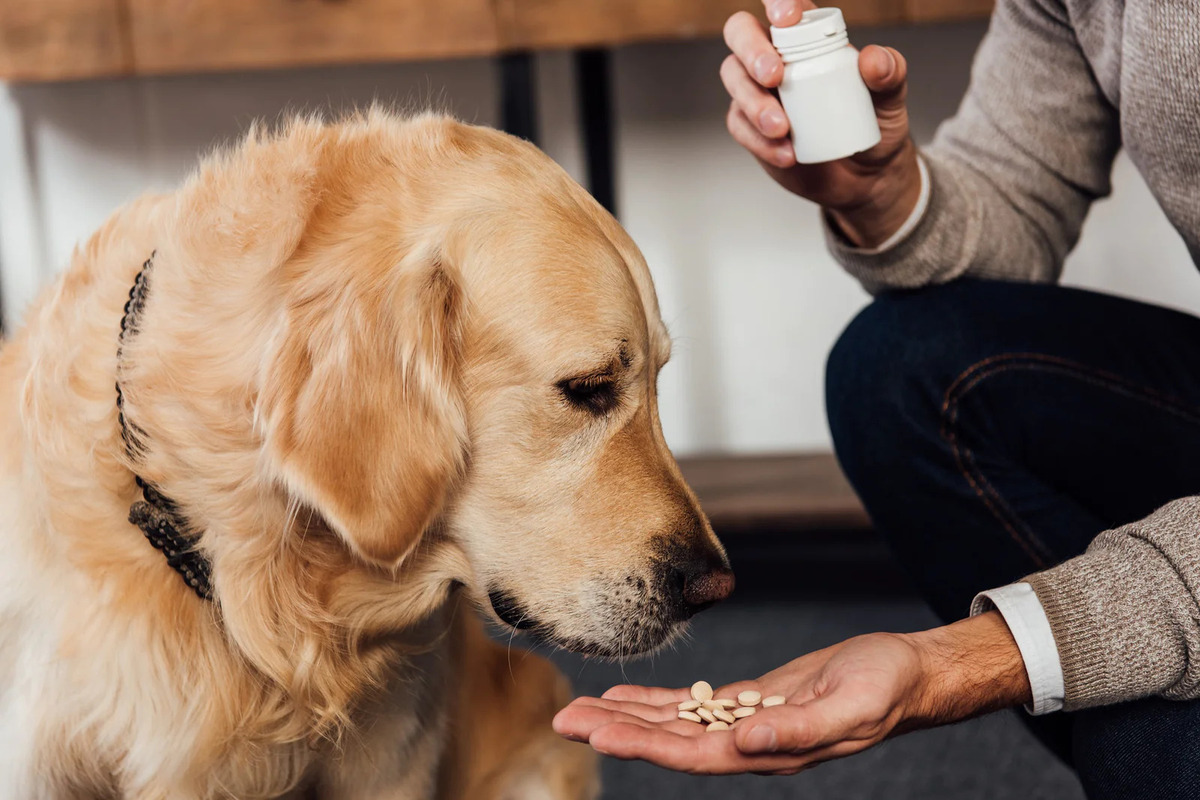Home>Health & Wellness>Common Health Issues>How Allergic Are Dogs To Chocolate


Common Health Issues
How Allergic Are Dogs To Chocolate
Published: January 26, 2024
Learn about common health issues in dogs, including their allergic reactions to chocolate. Understand the risks and symptoms to keep your pet safe.
(Many of the links in this article redirect to a specific reviewed product. Your purchase of these products through affiliate links helps to generate commission for Pawsomeoldies.com, at no extra cost. Learn more)
Table of Contents
Introduction
When it comes to our furry companions, their well-being is always a top priority. As responsible pet owners, we strive to provide them with a safe and nurturing environment. However, there are certain common health issues that can pose a threat to our pets, and one of the most widely recognized dangers is the consumption of chocolate by dogs.
Chocolate, a beloved treat for many humans, contains substances that can be highly toxic to dogs. The mere thought of our canine friends indulging in a piece of chocolate may seem harmless or even amusing at first, but the reality is far from lighthearted. The consequences of dogs ingesting chocolate can be severe and even life-threatening.
In this article, we will delve into the intricacies of this common health concern, exploring the reasons behind the toxicity of chocolate to dogs, the potential symptoms of chocolate poisoning, and the necessary steps to take if your dog has consumed this hazardous substance. By gaining a deeper understanding of the risks associated with chocolate ingestion, pet owners can equip themselves with the knowledge needed to protect their beloved companions from this prevalent danger.
Let's embark on a journey to uncover the truth about dogs and chocolate, shedding light on the crucial information that every pet owner should be aware of.
Can Dogs Eat Chocolate?
No, dogs should not eat chocolate. Chocolate contains theobromine and caffeine, both of which are toxic to dogs. Theobromine, in particular, can cause a range of adverse effects in dogs, including vomiting, diarrhea, rapid breathing, increased heart rate, seizures, and even death in severe cases.
It's important to note that the toxicity of chocolate varies depending on the type and amount consumed. Dark chocolate and unsweetened baking chocolate contain higher levels of theobromine compared to milk chocolate, making them more dangerous for dogs. Even small amounts of chocolate can be harmful to dogs, so it's crucial to keep all chocolate products out of their reach.
As much as dogs may be enticed by the aroma and taste of chocolate, it's imperative for pet owners to be vigilant and proactive in preventing their dogs from accessing any form of chocolate. This means being mindful of where chocolate is stored in the household and ensuring that it is securely out of reach of curious canine companions.
Understanding the potential risks associated with dogs consuming chocolate is the first step in safeguarding their well-being. By being aware of the dangers and taking the necessary precautions, pet owners can help ensure that their beloved dogs are kept safe from the harmful effects of chocolate ingestion.
Why Is Chocolate Toxic to Dogs?
Chocolate contains two primary components, theobromine and caffeine, both of which belong to a class of chemicals called methylxanthines. These substances are naturally occurring stimulants that affect the central nervous system and cardiovascular system in both humans and animals. While humans can metabolize theobromine and caffeine relatively efficiently, dogs process these compounds much more slowly, leading to a heightened sensitivity and susceptibility to their toxic effects.
Theobromine, in particular, is the main culprit behind the toxicity of chocolate to dogs. When dogs ingest chocolate, theobromine is absorbed into their bloodstream and can accumulate to dangerous levels due to their slower metabolism of this compound. Theobromine stimulates the central nervous system and causes an increase in heart rate, leading to a range of adverse effects, including restlessness, hyperactivity, tremors, seizures, and, in severe cases, cardiac arrest.
The level of theobromine in chocolate varies depending on the type of chocolate. Dark chocolate and unsweetened baking chocolate contain higher concentrations of theobromine compared to milk chocolate, making them more potent and hazardous to dogs. As a result, even small amounts of dark chocolate or baking chocolate can pose a significant risk to a dog's health.
In addition to theobromine, chocolate also contains caffeine, which further exacerbates the stimulant effects on dogs. Caffeine can contribute to increased heart rate, agitation, and other symptoms associated with chocolate toxicity. When combined with theobromine, the presence of caffeine in chocolate intensifies the potential harm to dogs, amplifying the severity of the toxic effects.
It's essential for pet owners to recognize the inherent dangers of chocolate for dogs and to understand the specific toxic components that make it harmful. By gaining insight into the mechanisms by which chocolate exerts its toxic effects on dogs, pet owners can appreciate the gravity of the situation and take proactive measures to prevent their canine companions from accessing chocolate in any form.
Understanding the underlying reasons for the toxicity of chocolate to dogs empowers pet owners to make informed decisions and implement effective strategies to safeguard their dogs from this prevalent health hazard. By being mindful of the potential risks and taking the necessary precautions, pet owners can play a pivotal role in protecting their beloved dogs from the detrimental effects of chocolate ingestion.
How Much Chocolate Is Toxic to Dogs?
The toxicity of chocolate to dogs is influenced by various factors, including the type of chocolate, the amount ingested, and the size of the dog. Dark chocolate and unsweetened baking chocolate contain higher concentrations of theobromine, making them more potent and hazardous to dogs compared to milk chocolate. As a general rule, the darker and more concentrated the chocolate, the greater the potential for toxicity.
To provide a clearer understanding of the toxic thresholds, it's essential to consider the theobromine content in different types of chocolate. Milk chocolate typically contains around 1-2 ounces of theobromine per pound of chocolate, while dark chocolate can contain up to 5-16 ounces of theobromine per pound. Unsweetened baking chocolate, being the most concentrated form, can contain a staggering 16-23 ounces of theobromine per pound.
In terms of the amount of chocolate that can be toxic to dogs, the toxic dose of theobromine is estimated to be around 100-200 milligrams per kilogram of body weight. This means that for a small dog weighing 10 pounds, consuming as little as 50-100 grams of dark chocolate or 5-10 grams of baking chocolate can potentially lead to theobromine toxicity. For larger dogs, the toxic threshold is relatively higher, but it's crucial to remember that any amount of chocolate can pose a risk to a dog's health.
It's important to note that individual dogs may exhibit varying degrees of sensitivity to theobromine, and factors such as age, overall health, and preexisting medical conditions can influence their susceptibility to chocolate toxicity. As such, the toxic effects of chocolate can manifest differently in different dogs, and there is no definitive "safe" amount of chocolate for dogs to consume.
Given the potential risks associated with chocolate ingestion, it's paramount for pet owners to err on the side of caution and prevent their dogs from consuming any amount of chocolate. By being mindful of the toxic thresholds and understanding the inherent dangers of chocolate for dogs, pet owners can take proactive measures to ensure that their beloved companions are kept safe from this prevalent health hazard.
Understanding the toxic thresholds of chocolate for dogs serves as a critical foundation for pet owners to make informed decisions and implement effective strategies to protect their dogs from the detrimental effects of chocolate ingestion. By being aware of the potential risks and taking the necessary precautions, pet owners can play a pivotal role in safeguarding the well-being of their canine companions.
Symptoms of Chocolate Poisoning in Dogs
The symptoms of chocolate poisoning in dogs can manifest in a range of distressing and potentially life-threatening ways. Upon ingesting chocolate, dogs may exhibit various signs of toxicity, which can serve as crucial indicators for pet owners to recognize and respond promptly to the situation. It's essential to be vigilant and observant, as early detection of these symptoms can significantly impact the outcome for the affected dog.
One of the initial signs of chocolate poisoning in dogs is gastrointestinal distress, which may include vomiting and diarrhea. These symptoms are often accompanied by restlessness and increased thirst. The presence of these early gastrointestinal signs can serve as a red flag for pet owners, signaling the potential ingestion of chocolate by their canine companions.
As the toxic effects of chocolate progress, dogs may display heightened agitation and hyperactivity. Restlessness, pacing, and an inability to settle down are common behavioral manifestations of chocolate poisoning. Additionally, dogs may experience tremors and muscle twitching, indicative of the stimulant effects of theobromine and caffeine present in chocolate.
An elevated heart rate, known as tachycardia, is another prominent symptom of chocolate poisoning in dogs. This rapid heartbeat can be concerning and may be accompanied by abnormal heart rhythms, further exacerbating the cardiovascular effects of the toxic compounds in chocolate.
In severe cases of chocolate poisoning, dogs may suffer from seizures, muscle rigidity, and even collapse. These neurological symptoms are indicative of the profound impact of theobromine on the central nervous system, posing a grave threat to the affected dog's well-being.
It's important to note that the onset and severity of symptoms can vary depending on the type and amount of chocolate ingested, as well as the individual dog's sensitivity to the toxic compounds. Furthermore, the size, age, and overall health of the dog can influence the manifestation of symptoms, making it crucial for pet owners to remain vigilant and attentive to any abnormal behaviors or physical signs in their dogs.
Recognizing the symptoms of chocolate poisoning in dogs is paramount for pet owners to take swift and decisive action in seeking veterinary care. The timely identification of these symptoms can facilitate prompt intervention, potentially mitigating the severity of the toxic effects and improving the prognosis for the affected dog.
By being aware of the potential symptoms and understanding their implications, pet owners can play a pivotal role in safeguarding their dogs from the detrimental effects of chocolate ingestion. Vigilance, prompt action, and a deep understanding of the symptoms of chocolate poisoning are essential components of responsible pet ownership, ensuring the well-being and safety of our beloved canine companions.
Read more: How To Know If Your Dog Is Allergic To Yeast
What to Do If Your Dog Eats Chocolate
If you discover that your dog has ingested chocolate, it's crucial to take immediate and decisive action to address this potentially life-threatening situation. The following steps outline the essential measures to be taken if your dog consumes chocolate:
-
Assess the Situation: Upon discovering that your dog has eaten chocolate, it's important to assess the type and amount of chocolate consumed. If possible, retrieve the packaging or remnants of the chocolate to determine the level of theobromine and caffeine present. This information can assist veterinary professionals in evaluating the potential risks and determining the appropriate course of action.
-
Contact Your Veterinarian: Promptly contact your veterinarian or an emergency veterinary clinic to seek professional guidance. Provide specific details about the type of chocolate ingested, the estimated quantity, and the approximate time of ingestion. This information will enable the veterinary team to assess the level of risk and provide tailored recommendations for your dog's care.
-
Monitor Your Dog: While awaiting veterinary advice, closely monitor your dog for any signs of chocolate poisoning, including vomiting, diarrhea, restlessness, agitation, tremors, elevated heart rate, seizures, or any other abnormal behaviors. Note the onset and progression of symptoms, as this information can be valuable for the veterinary assessment.
-
Follow Veterinary Recommendations: Upon contacting your veterinarian, follow their instructions diligently. They may advise you to induce vomiting in your dog if the ingestion occurred within a certain time frame and the dog is asymptomatic. Alternatively, they may recommend bringing your dog in for immediate medical evaluation and treatment. Adhering to the veterinary guidance is crucial for optimizing the outcome for your dog.
-
Seek Emergency Care if Necessary: In cases of significant chocolate ingestion or the onset of severe symptoms, seek emergency veterinary care without delay. Time is of the essence in addressing chocolate poisoning, and swift intervention can make a critical difference in the prognosis for your dog.
-
Prevent Future Incidents: Take proactive measures to prevent future incidents of chocolate ingestion by securing all chocolate products and ensuring that your dog cannot access them. Educate family members and visitors about the dangers of chocolate for dogs and the importance of keeping it out of their reach.
By following these steps and prioritizing the well-being of your dog, you can effectively navigate the challenging situation of chocolate ingestion and take decisive action to safeguard your canine companion's health. Swift and informed responses, in conjunction with professional veterinary care, are essential in mitigating the risks and ensuring the best possible outcome for your dog.
Conclusion
In conclusion, the ingestion of chocolate poses a significant and potentially life-threatening risk to dogs due to the presence of theobromine and caffeine, both of which are toxic to canine companions. The severity of chocolate poisoning in dogs is influenced by various factors, including the type of chocolate, the amount ingested, and the individual dog's sensitivity to the toxic compounds. Dark chocolate and unsweetened baking chocolate contain higher concentrations of theobromine, making them particularly hazardous to dogs.
Understanding the inherent dangers of chocolate for dogs is paramount for pet owners to take proactive measures in preventing their canine companions from accessing any form of chocolate. By being mindful of the toxic thresholds and recognizing the potential symptoms of chocolate poisoning, pet owners can play a pivotal role in safeguarding their dogs from this prevalent health hazard.
In the event of a dog consuming chocolate, swift and decisive action is essential. Contacting a veterinarian immediately, providing specific details about the chocolate ingested, and closely monitoring the dog for any signs of poisoning are crucial steps in addressing the situation. Following veterinary recommendations and seeking emergency care if necessary can significantly impact the outcome for the affected dog.
As responsible pet owners, it is imperative to prioritize the well-being and safety of our canine companions by taking proactive measures to prevent incidents of chocolate ingestion. Educating ourselves and others about the risks of chocolate for dogs and implementing stringent measures to keep chocolate out of their reach are fundamental aspects of responsible pet ownership.
By gaining a deeper understanding of the risks associated with chocolate ingestion and the necessary steps to take in the event of an incident, pet owners can equip themselves with the knowledge needed to protect their beloved companions from this prevalent danger. Through vigilance, prompt action, and a deep commitment to the well-being of our dogs, we can ensure that they are kept safe from the detrimental effects of chocolate ingestion.
In essence, the relationship between dogs and chocolate is one that demands unwavering attention and responsible management. By being informed and proactive, pet owners can create a safe and nurturing environment for their canine companions, free from the potential dangers posed by this beloved but hazardous treat.














